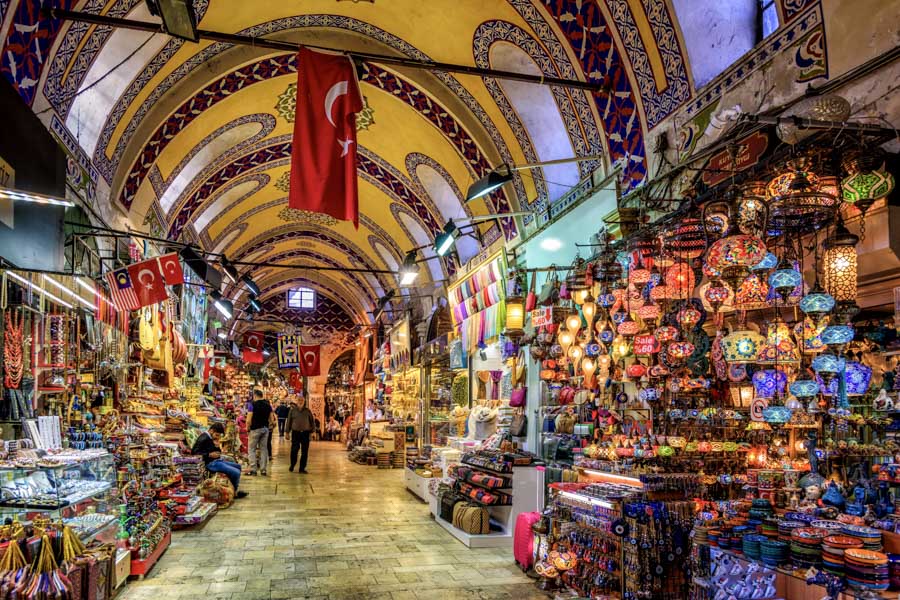
The Grand Bazaar Istanbul (Kapalıçarşı) is a legendary destination and one of the top activities in Turkey. Often featured on cultural tours in Istanbul, it stands at the crossroads of craftsmanship and shopping in Turkey (Türkiye).
This vibrant piece of Ottoman Empire history sits in the heart of the historic Fatih district, near Beyazıt Square. Sultan Mehmed II founded it shortly after the Ottoman Conquest of Constantinople in the 15th century.
Today, the Istanbul Grand Bazaar is among the best markets in Istanbul. Here, every newcomer encounters a maze of culture, commerce, and inspiring energy in its more than 4,000 shops.
Grand Bazaar Information
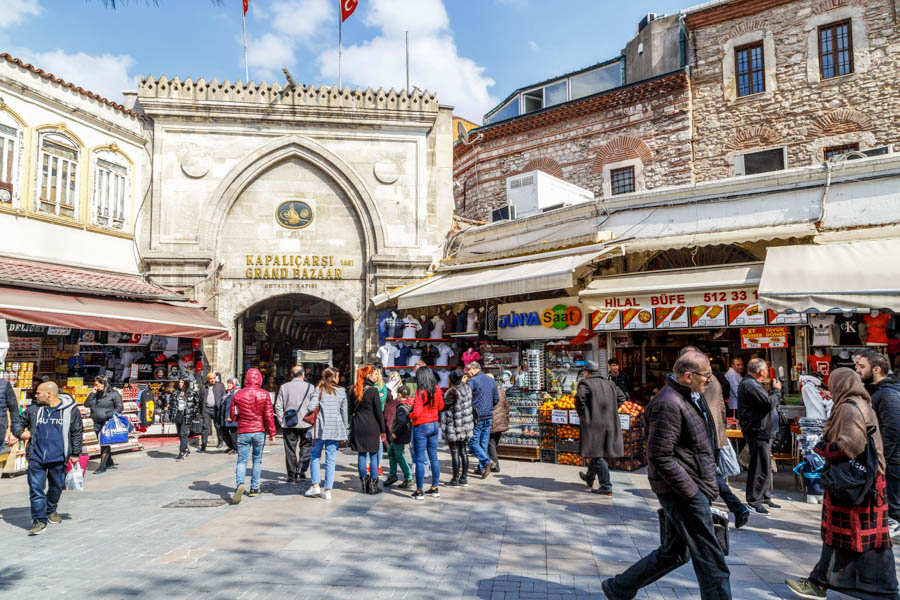
Visitors exploring this bazaar in Istanbul will find an extraordinary range of shops. Carpet dealers, lamp makers, spice merchants, and artisans specialising in traditional Turkish craft are all gathered here.
Before embarking on the Istanbul adventure, it is essential to have the key details to plan your visit effectively.
What are the Istanbul Grand Bazaar Istanbul Hours?
The market is open from 8:30am to 7:00pm, Monday through Saturday. It is closed on Sundays and public holidays. We always recommend checking for any last-minute changes, especially during religious festivals.
What are the Main Entrances of the Grand Bazaar?
The Grand Bazaar is vast, comprising over 60 streets and approximately 4,000 shops. The primary Grand Bazaar entrances are the eastern Nuruosmaniye Gate (near the mosque) and the Beyazıt Gate (leading to Beyazıt Square (Beyazıt Meydanı).
Others are the Çarşıkapı Gate (near the Column of Constantine) and the Mahmudpaşa Gate. Each offers a different starting point for exploring Kapalıçarşı. However, most visitors enter through the Nuruosmaniye Gate or the Beyazıt Gate.
When are the Istanbul Grand Bazaar Peak Hours?
Tourists can expect fewer crowds on weekday mornings. On the other hand, the Grand Bazaar's peak hours are typically in the afternoons and on weekends. The bazaar is also busy on holidays, with Saturdays particularly crowded.
Pro Tip: Plan your visit for 9:00am–11:00am or 6:00pm–7:00pm to experience a quieter atmosphere. During these times, you will also find it easier to move through the bazaar before crowds arrive.
How to Get to the Grand Bazaar from Your Location?
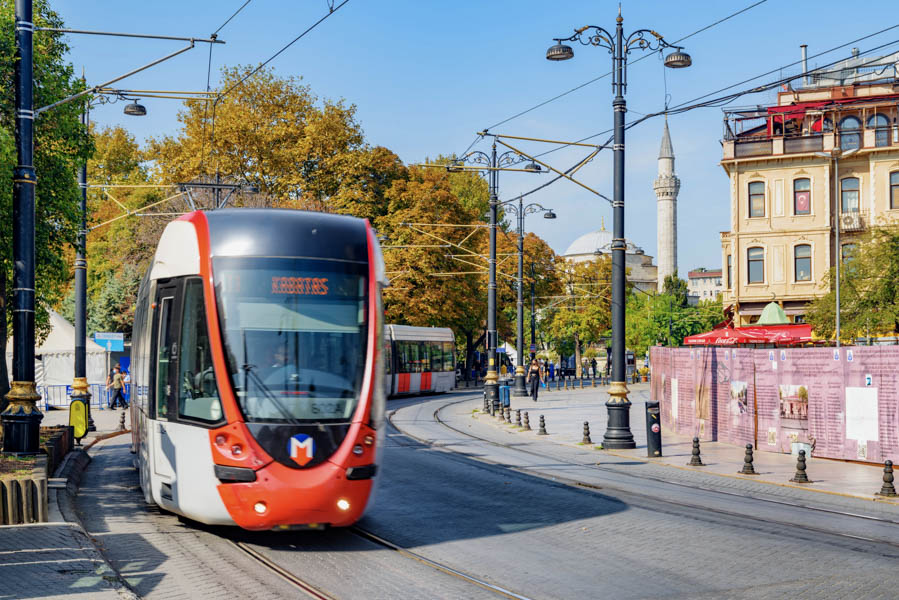
Reaching the Grand Bazaar Istanbul is easy from most tourist districts on the European side (Avrupa Yakası). If one plans a day of Istanbul shopping in the city’s historic heart, they can stay in Sultanahmet, Beyazıt, or Laleli. The bazaar lies within a short distance of these neighbourhoods.
Additionally, the T1 Tram Line stops at Beyazıt – Kapalıçarşı Station or Çemberlitaş, which is just a 5-minute walk from the main gates.
What if you are staying further afield on the European side – such as Taksim, Karaköy, or Şişli? Take the M2 Metro to Vezneciler or Şişhane or ride the F1 Funicular from Taksim to Kabataş. After that, connect to the T1 Tram heading toward Bağcılar.
Visitors coming from the Asian side (Anadolu Yakası) of Istanbul can reach the bazaar via several scenic routes. Take the Marmaray to Sirkeci, then transfer to the T1 Tram Line toward Bağcılar and get off at Beyazıt – Kapalıçarşı. Another option is to take a public ferry from Üsküdar or Kadıköy to Eminönü, and from there catch the tram directly to the bazaar. All these services accept Istanbulkart.
Traveller’s Note: Traffic in the Old City can be heavy, so public transport is usually the quickest way to reach the Grand Bazaar.
Grand Bazaar Tours
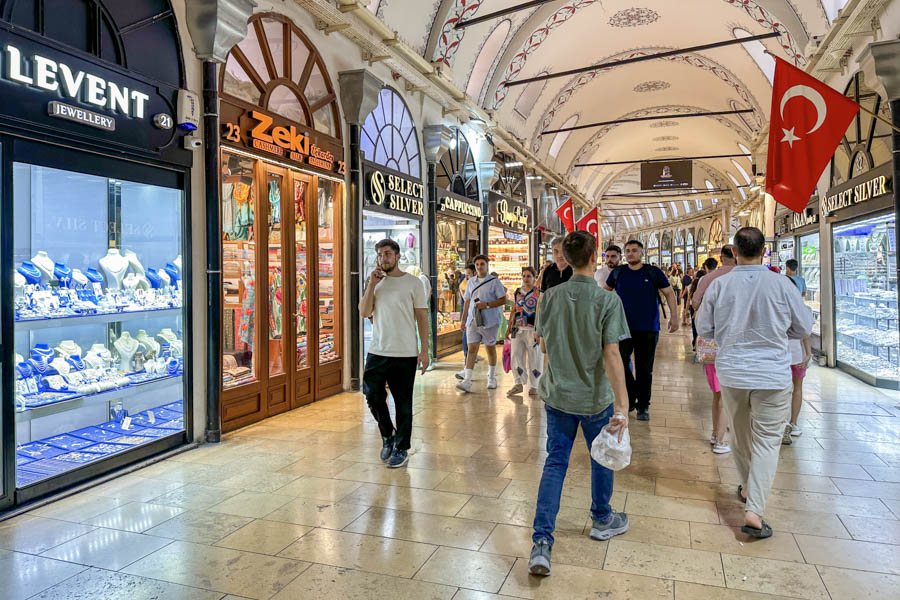
Joining a Grand Bazaar tour is among the top attractions in Istanbul for culture lovers. Many cultural tours in Istanbul take visitors on a guided walk through the bazaar streets and Hans. They highlight the bazaar’s rich history alongside its vibrant financial life.
Travellers can choose between small group tours in Istanbul or private tours of the Grand Bazaar. They often include stops for traditional Turkish coffee tasting or brief workshops on Istanbul bazaar shopping etiquette.
Some itineraries combine Grand Bazaar experiences with nearby UNESCO-recognised monuments such as the Blue Mosque (Sultanahmet Camii) and Hagia Sophia (Ayasofya Camii). Weekend visitors can also find weekend tours in Istanbul that involve shopping and culinary experiences.
Traveller’s Note: Most vendors accept credit cards, but small purchases – such as Turkish tea or handwoven bookmarks – are best paid in cash.
History of the Grand Bazaar in Istanbul: Ottoman Empire and Modernity

The Istanbul Grand Bazaar occupies a site that dates to the 5th century. At that time, the Byzantine Empire (330-1453) used the area for market activity. Yet, Sultan Mehmed II (also known as Mehmed the Conqueror) founded the Kapalıçarşı as we know it today in 1461.
The initial complex comprised 66 streets and over 4,000 shops across 30,700 square metres. It made it one of the largest and oldest covered bazaars in the world.
The Ottoman Blueprint: A City Within a City
Sultan Mehmed II ordered the construction of the market to supply Hagia Sophia, which had been newly transformed into a mosque. Over time, the complex evolved into a self-contained town. It had madrasas, mosques, fountains, wells, residences, and even a hammam.
The city divided its main commercial structures into the following categories: Bedesten, Grand Bazaar, Arastas, and Hans. The word "bedesten" emerged from the Persian "Bezistan" or "Bezzazistan". Originally, it referred to a textile market or a hall for cloth sellers.
The heart of the bazaar consists of the two core structures. The first built structure is the Bedesten of Gems (Cevâhir Bedestan) – the Inner Bedesten (İç Bedesten). It remains today the core of the Grand Bazaar. İç Bedesten lies between Kalpakçılar and Hacı Hasan streets, near the Beyazıt and Nuruosmaniye Mosques.
The second, newer section is the Sandal Bedesten (or Küçük Bedesten (Smaller Bedesten)). Visitors can explore it north of the first edifice in the Fatih district on Nuruosmaniye Street. Sandal Bedesten received its name after the fabric, which had a colour reminiscent of sandalwood. Until the mid-19th century, the Sandal Bedesten was the Ottoman Empire’s main textile trading hub.
The Guilds and the Golden Age
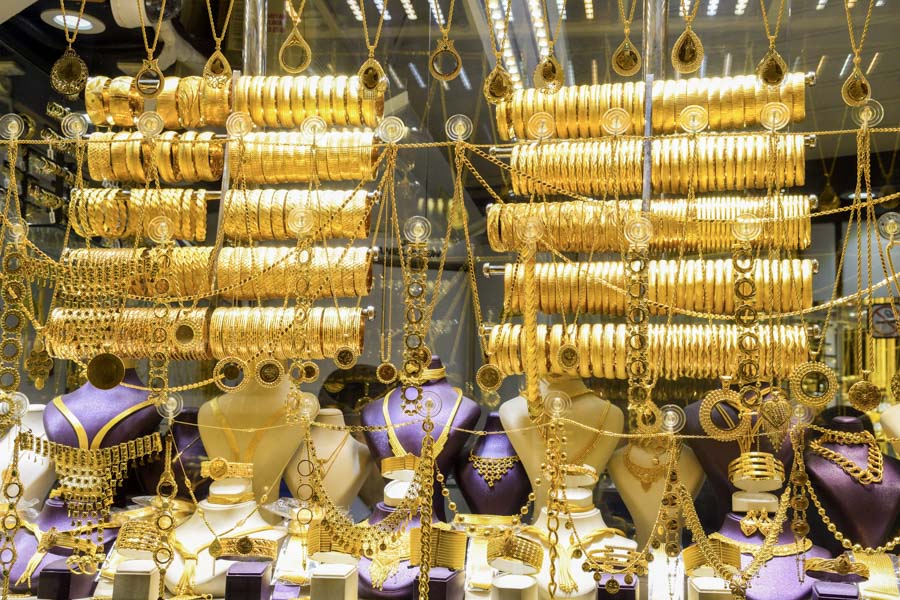
The bedesten (covered market) served as both a commercial and social centre during the Ottoman period. Each street belonged to a certain guild, dedicated to a single craft or occupation. Hatmakers sold hats on Kalpakcılar, jewellers on Kuyumcular, and oil sellers on Yağlıkçılar.
The Turkish suffix –cılar traditionally refers to artisans or “makers” of a specific craft. The association of artisans no longer exists. However, their names remain preserved in the street signs that still guide visitors. Today, jewellery shops line the main avenue, while goldsmiths occupy the adjoining alleys.
During those remote times, merchants from around the world gathered to exchange exotic goods and commodities. They would look for Arabic spears, Persian daggers, Bahrain pearls, Ankara blankets, or Chinese silks. These items arrived via the Silk Road. As a result, the historical Grand Bazaar became one of the most international marketplaces of its time.
Strict regulations, fixed prices, and a ban on advertising defined this Ottoman era. Shops were open stalls without doors or nameplates. The atmosphere embodied a disciplined commerce, different from a modern bargaining culture.
The four main entrances of the Old Bazaar were historically known as:
- Sahaflar Kapısı (north)
- Takkeciler Kapısı (south)
- Zenneciler Kapısı (west)
- Kuyumcular Kapısı (east)
Evolution into the Modern Bazaar
In 1894, a powerful earthquake reshaped the bazaar’s structure. The guild system disappeared, leading to a new design of enclosed façades. It took the form tourists recognise today.
Following a period of decline in the 19th century, Kapalıçarşı revived after World War II. Consequently, it adapted to modern commerce while retaining its authentic charm.
The historical Grand Bazaar in Istanbul is no longer a centre of elite trade. Instead, it is a popular destination for anyone, locals and tourists alike. And it continues to thrive with its unique handmade goods.
Traditional customs persist. Tourists will notice divans at many carpet shops. Vendors often invite customers to sit on these low sofas to sip tea and negotiate prices.
Bargaining at the Grand Bazaar remains an essential part of the experience. Yet surprisingly, some modern shops now display signs reading, “No Bargaining – Fixed Prices Only.”
Grand Bazaar Shopping – What to Buy in Turkey?
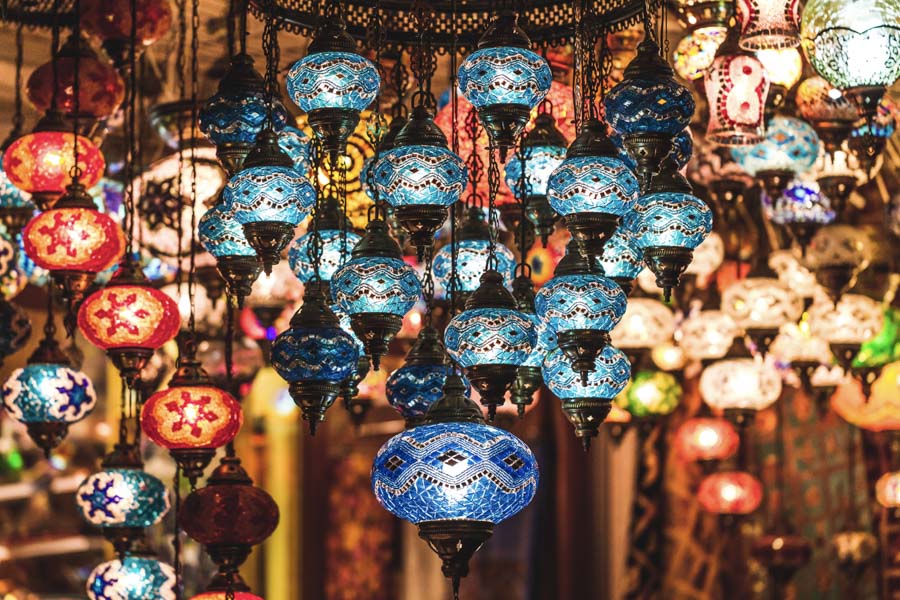
Shopping at the Grand Bazaar is a feast for the eyes, thanks to centuries of artisanship and vibrant colours. One of the best markets in Istanbul, it is a place that draws collectors, decorators, and souvenir hunters alike. Istanbul shopping is about a fascinating encounter with the country’s traditions and art. It promises numerous handmade treasures and fragrant delights.
Kapalıçarşı’s narrow lanes are brimming with authentic goods when choosing souvenirs from Turkey. Below are some of the most sought-after items.
Turkish Lamps
The authentically Turkish mosaic lamps and chandeliers are perhaps the most familiar symbols of the Grand Bazaar Istanbul. Glassmakers still use traditional methods to produce these luminous works of glass.
Notable lamp shops are Brothers Lamp and Tuncer Gift Shop. Both have a wide selection of high-quality decorative glassware. They can also arrange international shipping for your purchases.
Traveller’s Note: Ask the shop owner to demonstrate how each lamp looks when lit. Some designs only reveal their full beauty under warm light.
Turkish Teacups
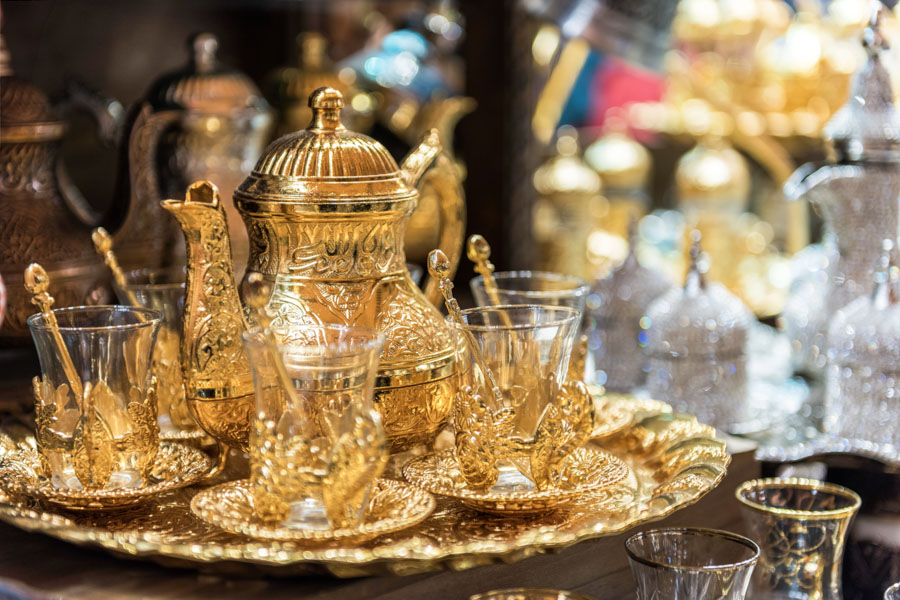
Tea (çay) is the essence of the Turkish warm welcome, and the Grand Bazaar is the place to purchase Turkish teacups. Sets vary from simple designs to hand-painted ceramics, often sold with ornate trays and brass spoons. They make perfect gifts and are easy to pack for travel.
Uşak Carpets (Uşak Halısı)
Uşak carpets have a heritage dating back to the early Ottoman period. At that time, the town of Uşak was renowned for its kilim (rug) production. Buyers praise wool carpets for their geometric motifs and natural dyes.
A reputable carpet dealer at the bazaar is Anatolian Carpet & Bag, located close to the Nuruosmaniye Mosque. Kenan Belli runs this business. In the surrounding area, other well-known carpet retailers include Hakan Evin Rug Store and Adnan & Hasan. The two specialise in antique and contemporary Turkish carpets.
Another highly regarded destination is Dhoku Store, at 58–60 Takkeciler Street, which specialises in kilims and antique textiles. Most of these stores provide worldwide shipping.
Pro Tip: Head to the Zincirli Han, a peaceful and hidden gem of the Grand Bazaar. The ground floor of the former inn houses a few carpet shops, and on the second floor, there are jewellery workshops. In this historic place in Istanbul, visitors can take a break with a cup of Turkish tea.
Turkish Delight
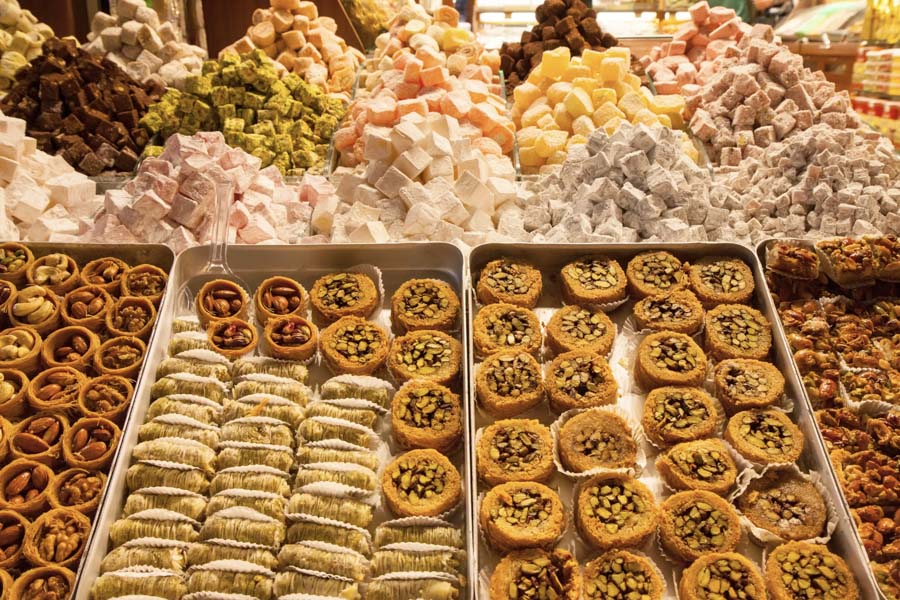
No Istanbul bazaar shopping is complete without sampling Turkish delight (lokum) – the country’s signature sweet treat. Among the notable sweet shops is Youssef Shahin Grand Bazar, situated on Yeşildirekli Street. Here, visitors can choose from a variety of flavours, including rose and pomegranate, as well as pistachio and chocolate. Most shops can vacuum-seal these candies to meet airport and customs standards.
Traveller’s Note: For gifts, opt for lovely, wrapped boxes of assorted lokum – they are lightweight and fragrant.
Gold and Silver Jewellery
The Grand Bazaar Istanbul is renowned for its dazzling gold and jewellery shops. For those seeking handcrafted engagement rings, Ottoman-style bangles, or modern diamond settings, the Grand Bazaar is the place.
Local jewellers offer exceptional quality and competitive prices. The main hub is Hakkakbaşı Street, where kuyumcular (jewellers) line both sides of the street. More fine jewellery stores can be found along Nuruosmaniye Street.
Traveller’s Note: Many shops craft custom designs or adjust ring sizes within hours for a personalised purchase.
Visit the Grand Bazaar Alternatives

A few additional top attractions in Istanbul provide excellent opportunities for shopping and culture. One of them is the Spice Bazaar. Istanbul residents often refer to the Spice Bazaar as the Egyptian Bazaar (Mısır Çarşısı). This smaller but equally atmospheric market in Eminönü displays spices, dried fruits, herbal teas, and Turkish sweets. In the Eminönü district on the shores of the Golden Horn, one can sense the aroma of grilled fish.
Among other Grand Bazaar alternatives and the best markets in Istanbul is the Arasta Bazaar. Its calm, open-air layout and master workrooms are ideal for browsing carpets, ceramics, and textiles without crowds.
Modern shopping and vibrant street life pulse on İstiklal Street. Here, contemporary boutiques and cafés mingle with historical passages and music stores.
At the same rate, İstanbul Cevahir Shopping Mall in Şişli will delight with a modern shopping environment featuring international brands. It ranks among the largest malls in Europe and serves as a contemporary alternative to traditional markets.
Hotels Close to the Grand Bazaar Istanbul
Travellers who wish to stay close to the action will find plenty of hotels near the Grand Bazaar Istanbul. The neighbourhoods of Beyazıt, Sultanahmet, and Laleli are home to various accommodation types. These are affordable guesthouses and luxury boutique hotels. Staying nearby allows visitors to walk through the bazaar in its quiet morning and evening hours.
Traveller’s Note: Book early during peak tourist seasons (spring and autumn). Hotels in this area fill quickly because of their proximity to Istanbul’s main landmarks.
Istanbul Grand Bazaar Shopping Online
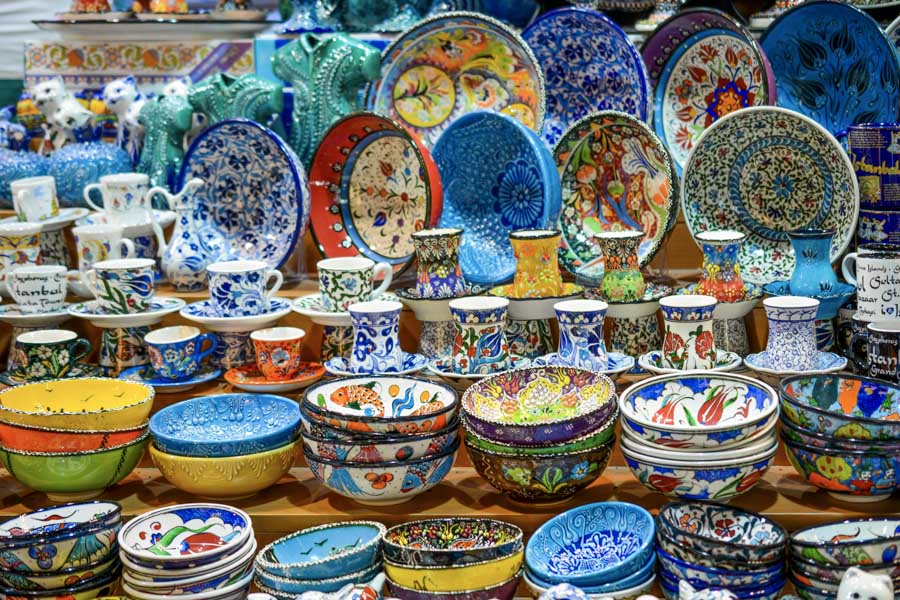
The Grand Bazaar experiences are no longer limited to wandering its bustling corridors in person. In the age of digital convenience, many travellers now explore the Istanbul Grand Bazaar shopping online. They easily choose their favourite items from home with just a few clicks.
The historic marketplace has adapted to this trend. Therefore, several platforms showcase products sourced directly from Kapalıçarşı’s boutiques and artisan workshops.
Two major platforms are grandturkishbazaar.com and grandbazaarshopping.com. They sell lamps, ceramics, jewellery, textiles, gourmet treats, and a wide range of souvenirs from Turkey.

